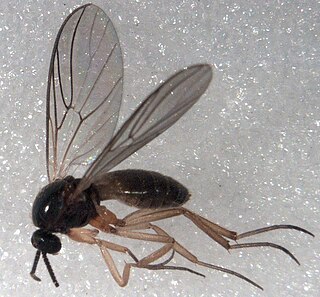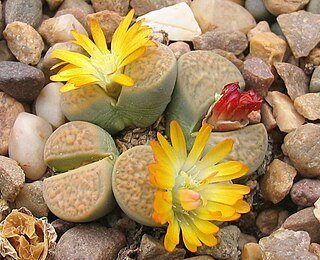
The walrus is a large pinniped marine mammal with discontinuous distribution about the North Pole in the Arctic Ocean and subarctic seas of the Northern Hemisphere. It is the only extant species in the family Odobenidae and genus Odobenus. This species is subdivided into two subspecies: the Atlantic walrus, which lives in the Atlantic Ocean, and the Pacific walrus, which lives in the Pacific Ocean.

Ceanothus is a genus of about 50–60 species of nitrogen-fixing shrubs and small trees in the buckthorn family (Rhamnaceae). Common names for members of this genus are buckbrush, California lilac, soap bush, or just ceanothus. "Ceanothus" comes from Ancient Greek: κεάνωθος (keanōthos), which was applied by Theophrastus to an Old World plant believed to be Cirsium arvense.

Babesia, also called Nuttallia, is an apicomplexan parasite that infects red blood cells and is transmitted by ticks. Originally discovered by the Romanian bacteriologist Victor Babeș in 1888, over 100 species of Babesia have since been identified.
Stylidium divergens is a dicotyledonous plant that belongs to the genus Stylidium and was described as a new species in 2000. The specific epithet divergens means diverging or separating, referring to the widely spreading posterior petals. It is an erect annual plant that grows from 7 to 27 cm tall. Obovate, orbicular, or elliptical leaves, about 2-6 per plant, form a basal rosette. The leaves are generally 4-21 mm long and 3-5 mm wide. This species generally has one to six scapes and cymose inflorescences that are 4-24 cm long. Flowers are white or mauve. S. divergens is endemic to Kakadu National Park in the Northern Territory of Australia. Its typical habitats are sandstone slopes and gullies. It flowers in the southern hemisphere in April. S. divergens is most closely related to S. accedens. Its conservation status has been assessed as data-deficient.

Erigeron divergens is a species of flowering plant in the family Asteraceae known by the common name spreading fleabane. It is native to western North America.

Ingerophrynus divergens is a species of toad in the family Bufonidae. It is found in Malay Peninsula, Borneo, Sumatra, and Natuna Islands. It occurs in well-drained lowland rainforests. It breeds in standing water and slow-moving intermittent streams. It is widespread in suitable habitat but not abundant. It is threatened by habitat loss caused by clear-cutting.
Austroblechnum divergens, synonyms including Blechnum divergens, Blechnum rimbachii and Blechnum floresii, is a species of fern in the family Blechnaceae.

Wissadula is a genus of flowering plants in the mallow family, Malvaceae. It contains 25 to 30 species of herbs and subshrubs that are mostly native to the Neotropics, with several in tropical Asia and Africa. The name is derived from the Sinhala language.
Ansorgia is a monotypic moth genus in the family Geometridae. Its only species, Ansorgia divergens, is found in Uganda. Both the genus and species were described by Warren in 1899.

Drasteria divergens is a moth of the family Erebidae. It is found from California to Colorado, north to British Columbia.
Abacetus divergens is a species of ground beetle in the subfamily Pterostichinae. It was described by Tschitscherine in 1899.
Grouvellina divergens is a species of ground beetle in the subfamily Rhysodinae. It was described by R.T. & J.R. Bell in 1979.
Ceuthophilus divergens, the divergent camel cricket, is a species of camel crickets in the family Rhaphidophoridae. It is found in North America.

Catorhintha is a genus of leaf-footed bugs in the family Coreidae. There are more than 30 described species in Catorhintha.

Phyrdenus divergens is a species of hidden snout weevil in the beetle family Curculionidae. It is found in North America.

Phyrdenus is a genus of hidden snout weevils in the beetle family Curculionidae. There are more than 20 described species in Phyrdenus.
Optioservus divergens is a species of riffle beetle in the family Elmidae. It is found in North America.

Mycetobia is a genus of wood gnats in the family Anisopodidae. There are more than 20 described species in Mycetobia.
Melanoplus divergens, the lobecercus short-wing grasshopper, is a species of spur-throated grasshopper in the family Acrididae. It is found in North America.

Lithops divergens is a succulent plant species in the genus Lithops of the family Aizoaceae. It is endemic to the western Cape Provinces of South Africa. It is able to withstand intense climatic changes due to its resilience as a succulent. The average annual rainfall for its natural environment is less than 150 mm, occurring primarily in winter which is unusual for a Lithops.











